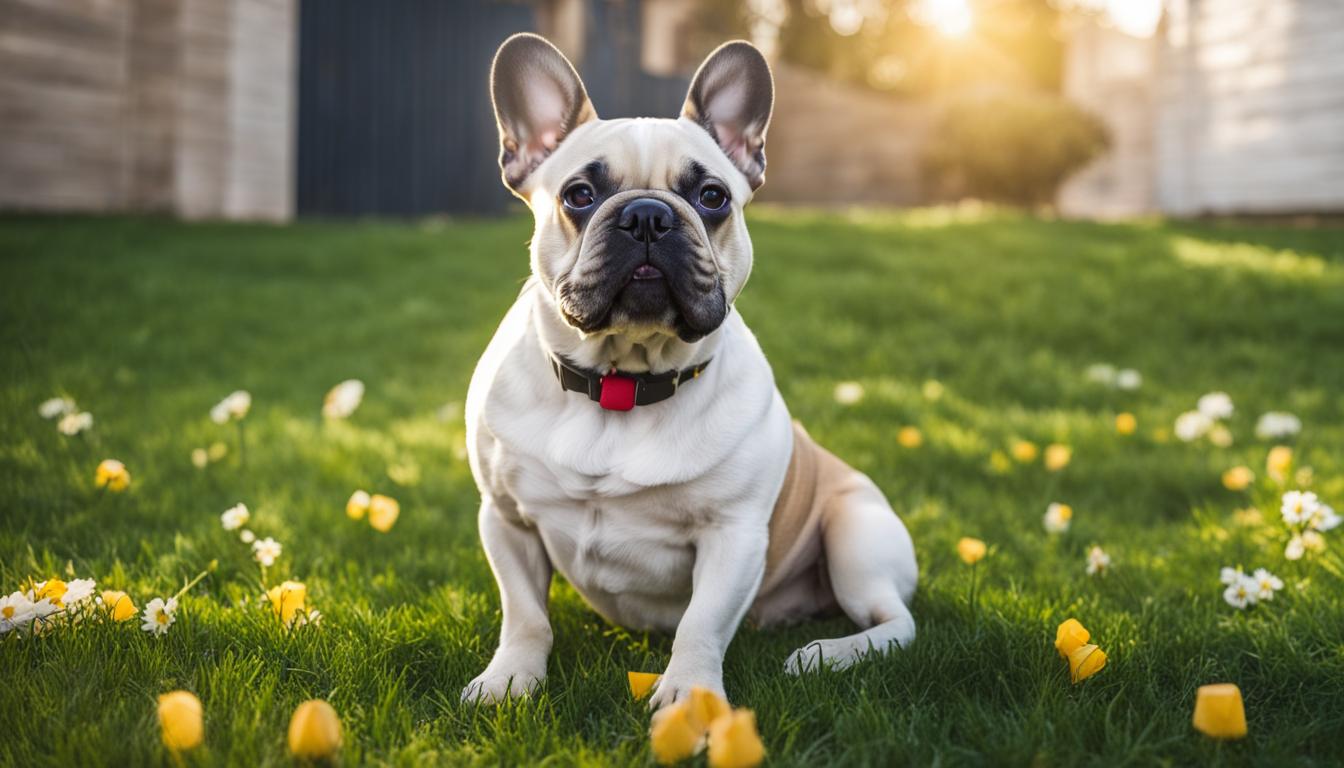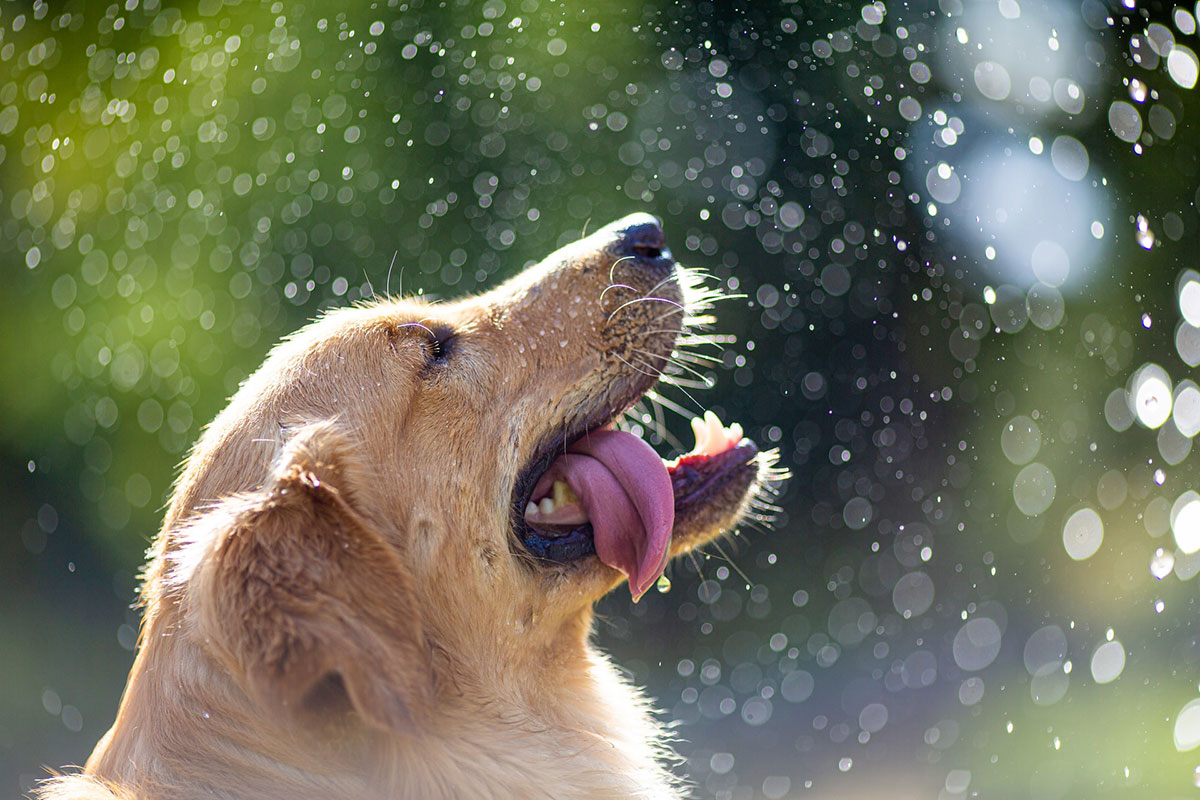Table of Contents
I have compiled the below list of strategies to provide a variety of options on how to stop your dog from barking when away from your home, more specifically when your dog is alone.
I found using more than one approach to manage dog barking works best. A single strategy generally doesn’t stop the barking, having said that every dog is different along with breed, environment and age.
Results might not come instant, it can take time so be patient, talk to your neighbour and let them know you are working on a plan. Communication is key to managing your stress. You will need more than a common list that suggests How to stop dog barking in seconds. This will take time but you will see the results.
Exercise and Training
I am often asked, how to fix nuisance barking or can dogs be trained not to bark. Well, the answer varies, but there are many ways to consider managing the behaviour. See the below items covering exercise and training.
1. Regular Daily Dog Walk: Number one on my list, and can often provide a quick result. Exercise is important for any active dog, especially in the younger years. Having said that, my dog is 16 and still has plenty of energy and will happily bark if I don’t implement appropriate strategies. Take your dog out over the weekend, to a big field, or a dog park to mingle, provide at least two 20-45 minute walk sessions each week as a minimum.
Walking will tire your dog, which can help manage stress especially if the walk is within a 24 hour period of your being away from him or her. Extra tip, try not to excite your dog around walk time, or even adjust how he begins the walk process and also change the time to minimise learnt behaviour.
2. Walk dog before going to work: If you can adjust your own schedule, try getting your dog out for a short walk before you leave for the day. This will help to tire him out and allow for any pees and poops. I have found that walking can mask the underlying issue, and by tiring the dog out, its possible any trigger or other cause of the barking remains. So while walking is a great option, you will very often need to find the cause of the barking behaviour and implement a multi-strategy approach.
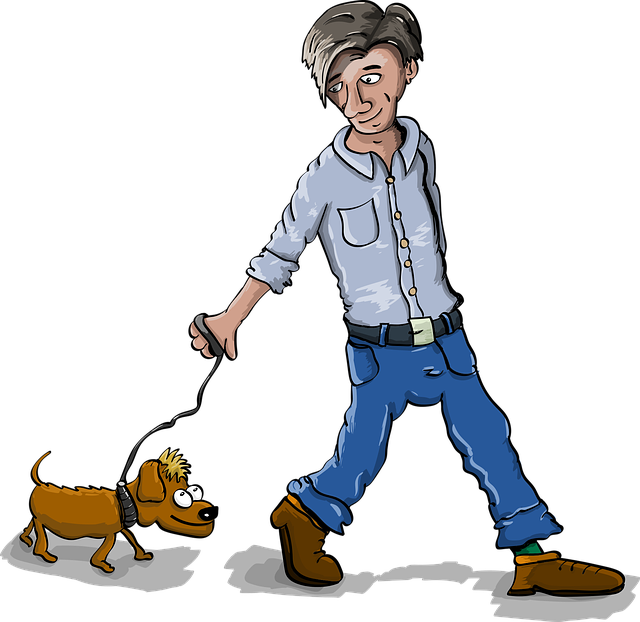
3. Take your dog to the beach and tire him out on a regular basis: Some dogs just have way too much energy, mostly due to the breed and genetics. If you have a dog like this, you will need to burn its energy and a lot of it. A slow walk around the block won’t do it, you will need to find a big area like a beach or park, and ideally a ball or something else that will enable him to run, far and fast.
You will need to embed this into your routine as well, get up earlier or make necessary adjustments to enable the increased activity for your dog. This can be seen as a long term fix, but I would generally say it’s masking an underlying problem that’s causing the barking. As such, try other strategies in the list that align to your circumstances and help answer how to stop your dog from barking.
4. Ride a bike or run with your dog: For active breeds, you need to burn energy. I found riding my bike with my dog on the side, really pushed the limits and tired her out. There is an art to riding your bike and having a dog beside you, so do some research first. But a quick 15 minute ride with your dog could be enough to tire her for the entire day. If you are into running, get a lead where you can attach your dog to you and hit the road.

5. Maintain regular dog training for general obedience: Some dogs need constant regular training to keep them in order. Determine if this is your dog and if so, keep your local trainer scheduled. They may have specific skills that align to your dog breed to help minimize nuisance behaviour.
6. Throw food on lawn and grass area. Throw a large handful of food: I loved doing this with my dogs. I would throw food out, this kept them busy and tired them out before I left for work. A little bit of dog dry food is great, you do need to make sure your dog is motivated by food. So ensure you don’t free feed your dog, or over feed and ensure he is at a good weight.
7. Consider obedience classes to help stimulate your dog’s brain – mental exercise: If your dog is stimulated by mental activities, then introduce obedience classes into your program. Once or twice a week as a minimum. Try practising at home for 15-30 minutes a day if needed. Try before you leave for the day. This will help tire your dog’s brain and give him satisfaction before you leave.

8. Avoid punishment and negative based training such as shock collars, hitting or yelling: As highlighted, we need to avoid negative based punishment as this does not solve the root cause of the problem. Spend time working out the cause or causes and minimize the exposure to reduce barking. As an example, hitting your dog for barking every time someone walks past won’t work. You need to prevent him from seeing that person as he won’t bark then.
9. For an active breed or puppy, increase walking, running or other activities: Some dogs have an abundance of energy. Border Collie for example. They need a lot more walking and exercise than a bull dog. Make sure you take this into consideration when reviewing the amount of energy your dog needs to exhale each day. Plan your schedule to ensure you meet or even exceed the exercise requirement.
10. Consider a dog specific pool for exercise: There are great clubs available that offer dog specific exercise. This low impact approach is great for big heavy dogs, or unwell companions. The high intensity work out can really tire your dog out. Not really fixing the root cause issue, but more of a general health management strategy. Combined with other items you might see a positive result.
Not all locations have these types of services so you might need to look around.

11. Provide positive daily training with your dog: Daily training or as often as possible can help keep your dog’s brain active. It also assists with educating her in many different fields. If you have a puppy, this can be an important strategy. Even simple basic tasks like sitting and laying down. Progress to more complex training as your dog becomes more confident.
12. Train your dog to hold toys in its mouth, this can be used to distract dogs as they focus on the toy: This was a reader recommended approach. She was able to train her dog to hold toys in its mount. He became very obsessed and would regularly have something in there. With a toy always in the mount, barking wasn’t possible and that fixed her issue. Probably a longer term approach, but something to consider. Likely won’t work for all breeds and age groups.
13. Use positive based reward to train your dog to stop barking on a command. You can use this command if you see your dog barking via a remote camera to stop him while away. The old dog clicker trick. If you can get your dog to stop on command, make sure the command you use can be activated remotely. It will take some work, but a good plan to mitigate barking is only going to help. This is a great article that goes into some depth on the approach. Great reference here.
14. Regular Water play: Some dogs go crazy with water play and can tire quickly. While not a direct and long term approach, it is something worth adding into your toolkit. Have a quick game before you leave for work as an example.

This is my beagle and a good friend suggested this when I asked her how to stop my dog from barking when I leave home. It was her who suggested to create a list like this.
Home Environment and Climate and Bedding
15. Sleep in a different room from you: After 15 years of having my dog sleep in the same room, I had to try this approach, as I was running out of ideas. Now, I will probably say it might not work for everyone but in an attempt to reduce separation anxiety, sleeping in another room can help your dog understand that he doesn’t need to be by your side at all times. The approach is to reduce the connection your dog has with you, which in turn can help when you are away. Your dog begins to learn that its ok to be separate and he or she doesn’t need to be by your side at all times.

Work out the best place for your dog to sleep away from you, even outside your dog as a starting point. Give him an old shirt or similar so he can smell your scent. Try for a few weeks, see if there is any improvement and then re-asses.
16. Try moving bed location: Making changes to your dogs environment can play a big part in behavioural barking. Moving house, changes in the home dynamics all play a part. Your dog is smart, and aware and understands what is going on. If you have moved house, or changed anything that could be disturbing your dog, try adjusting his bed location. If the current position is close to a sound or noise, this could be a trigger to barking.
Or even small changes to lighting and other surroundings could help keep your loved one settled while you are away. Its important to not make lots of changes at one, keep this in mind, changes are instant and do take time too. So, don’t go changing the location ever few days, give it a month to see if there is any results.
17. Close windows and blinds: Closing the house to prevent window gazing can provide immediate relief to a barking dog. It can also provide a negative outcome as I mention later. My cocker reacted positively when I closed the blinds. She was no longer able to see people walking past our apartment which reduced her barking. Especially when at work and tension increased towards the afternoon.

18. Try reducing or expanding the area the dog can roam when alone: Big area or small area, each breed and dog will prefer something different. Mix up their living space if you can. My cocker preferred more room to roam, by allowing this, it helped manage her stress while away. Try different rooms if your house permits.
19. Open the window or provide a larger space for the dog to roam so it doesn’t feel enclosed: The feeling of being closed in for some dogs can cause them to get anxious. Allowing to roam freely enables them to feel less constrained. Try adjusting where your dog can get access too, test over a period such as a week and review the results.
20. Consider a crate to help your dog feel safe: I wouldn’t keep your dog in a crate all day, but for short periods this can help make him feel safe. Some dogs dig a crate, others hate it. Work out if this is an option for you and give it a try. But remember in moderation and determine if it works for your dog.

21. Ensure your dog is not too hot or cold: If you live in a climate where you get extreme weather or swings that may result in a large temperate change in a short period, consider how your dog feels. If its cold and he is alone, likely he will get uptight. Possibly begin moving around in attempt to stay active. Ensure your dog has somewhere warm to snuggle into. Let him stay in the house if an outside dog during the poor weather conditions. Change your approach, try different things.
Same for hot days, its very important to ensure your dog stays cool. Don’t lock him up in a stinking hot house, he could get very. Or if he is uncomfortable, initiate a barking event. Monitor the temperate, keep your dog comfortable.
22. If Dog outside, block specific areas such as front of house: In my old house, our cocker spaniel would fight with another dog between the fence line. They couldn’t see each other, but close another to smell. They would set each other off and once started the noise would last forever. I had to block that section off to prevent the ongoing barking. I used chicken wire and it worked a treat.
A small change like this while not good to look at, can help manage everyone’s stress levels. Keep this idea in mind if you are experiencing outdoor barking issues.
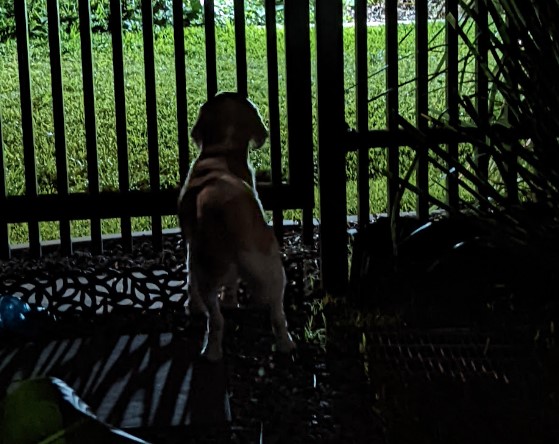
23. If dog always outside, block access to animals along fence line. As mentioned, check your fence line make sure there are no other animals close by that could be a trigger for nuisance barking. You might need to get up high and look over the fence, but spend some time and conduct a good audit.
24. Let your dog inside if an outside dog. Provide a safe comfortable place to sleep. Allow your dog to stay inside, can really change the mind set. Even if you allow a specific area like a wash room. Your dog may feel safe and happier if inside reducing stress and minimising barking. I understand some dogs are just outside dogs, but its worth breaking these rules to see if you can minimise barking events.
25. Change dog bed, make sure its extra soft and has side walls: We all hate sleeping on an uncomfortable dog. Interesting dogs do too. You will see your dog spinning when sleeping on a fluffy bed, this is to pad it down like she would do if sleeping in the wild on long grass. They have ingrained habits to make a sleeping spot comfortable. You as the owner, have the responsibility to provide a comfortable bed for your dog. And if you are seeing barking issues, ensure this is achieved even more so. My beagle loved a bed with side walls, or something she could get into and hide. It gave her a sense of security. Try different beds look on used markets if needed but make sure your dog is comfortable when sleeping.
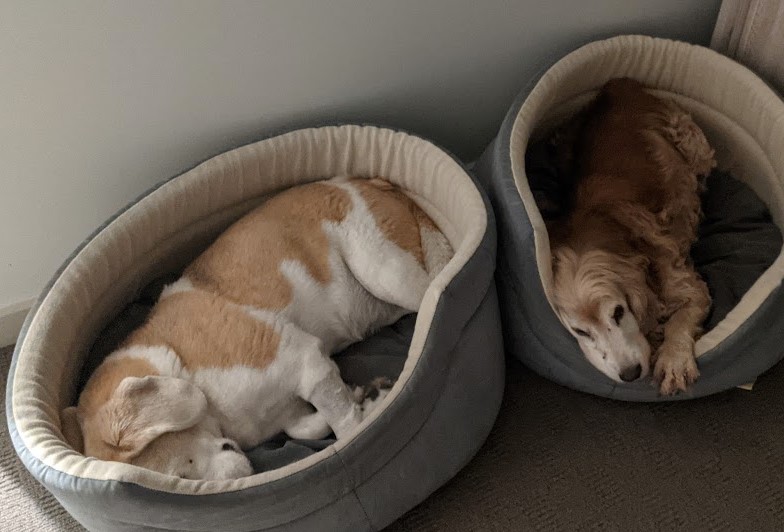
26. Provide your dog with a kennel if outside, use treats to start the process: Outside sleep is needed for some dogs, especially if they are big and you have no option to allow indoors. If so, provide your dog with a small dog house or kennel. This can be your dogs own place and will allow him to be comfortable and secure. When you first purchase, place dog treats inside the kennel along with a bed, so he can see its Ok and safe to enter. It might take a few attempts, having said that, some dogs like my cocker spaniel never liked to go into a kennel. The beagle on the other hand loved it.
27. Move dog from guarding post such as front entry and block: I had a friend where their dog sat at the fence, waited there all afternoon as the day got older, the barking began. Quick an easy fix (it did take some time for her to agreed and try however) was to block access to the front entry. It was a near instant result. If you are seeing something similar, try making adjustments to how and where your dog gets access too. Small changes, monitor and re-adjust as needed.
28. Leave a fan running, overhead or pedestal: Not only will it cool your dog on a hot day, it can act as a white noise. Simple, easy little strategy, that can work well with others listed here.

29. Prevent cat from getting into the yard: Hot tip from a reader a while ago. She had a cat that was setting off her dog. As the cat came close, the dog would chase and get very uptight and begin barking. Make sure you don’t have any cats entering your house that could set your dog off.
30. Set air-conditioning or heating timer to ensure your dog is comfortable: Get the temperature just right if needed. If your dog is older, its likely he will be more sensitive to the temperature. Make sure your dog is comfortable to minimise heat or cool related stress.
31. Adjust lighting to improve comfort. Could be brighter or darker depending on breed: I found darker was preferred for my beagle, she likes to snuggle in. Closing blinds was a great help to reduce stress. It also has other benefits as indicated in my list. Try adjusting the lighting, review the results. Remember it might take a few days or longer before a change occurs.

32. Block access to stairs to prevent second story window gazing and barking: Don’t let your dog upstairs or into an area that is going to cause her to get uptight. Put a baby gate in or other retractable doors to prevent access. You will probably have an understanding of the areas in question, so block them off and see the result.
33. Place plastic film or spray to prevent your dog looking out the window: There are many plastic films you can place over your window to blur or block vision. This is a great option if you are unable to place a blind or block access. You dont have to do the entire window, it could just be a lower section if your dog isn’t too tall. Lowes has plenty of options if you search for Window Film.
34. Move house: Long shot! But an option to consider. When I moved, the tension changed, having more yard space also helped. If you are considering a change, then maybe fast track to help manage your barking problem. Also note this could have a negative impact, so if you are considering moving, make sure you review the yard, internal aspects and other factors to keep your dog happy.
35. Don’t place or lock dog in an unfamiliar room or area of the house: If you have moved, let your dog adjust. It can take up to a months. Don’t lock him or her away in a room that is small. This will really set your dog off. Make sure he has open space to get on with his business.
36. Desensitise your departure: If you have a two story place, this can work really well. Go upstairs, work away, don’t let your dog see you. Wait at least an hour, and slowly increase to more. Walk down stairs, if your dog logs excited to see you ignore him. Repeat, repeat and repeat. Increase the time and keep repeating. This will help let your dog know that you are not far away, and there is nothing to worry when you are not close, but you will return soon enough.
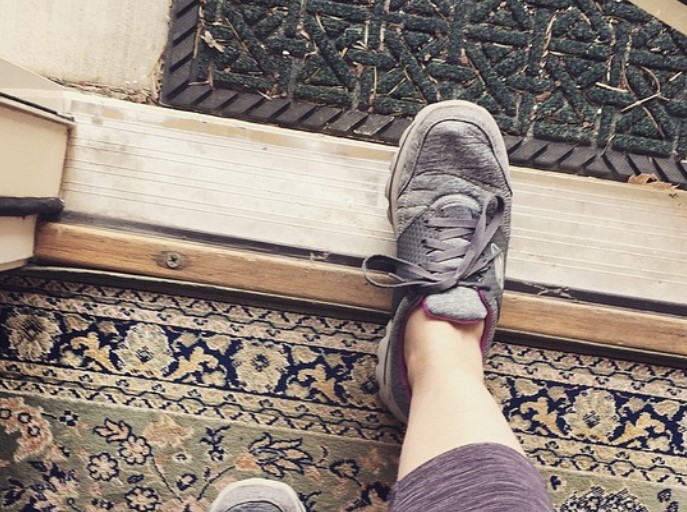
If you don’t have a second level, try a room away from your dog. This is a good option if you work from home some days, you can really take full advantage of this strategy
37. Get parcels delivered to different areas: If your dog gets upset when he sees a delivery, request the package to get placed in a different area or another friendly house in your neighbourhood. Worse case, have it delivered to your work.
38. If your dog barks at visitors, don’t let him greet them make hit sit on a mat or in another room: Keep your dog calm when a visitor enters the house. Don’t let your dog get uptight and begin barking. With you being home, you can set and control the ground rules.
Food and Diet
39. Cease food related activities close to when barking commences: Dogs can establish routines quickly, and this is emphasised when it comes to food. They remember dinner time and this can often trigger a barking event. More so, if your breed is food focused or you have more than one dog. Its possible the leader of the pack may start the backing as he begins to control the imminent meal ahead. It could be 2-3 hours, or even more before you feed your dog, but try adjusting the time, push it back if it makes sense. Trying different things, as without making any change, you will likely still see the barking behaviour.
40. Ensure your dog has a full stomach: Food is key, is a primary motivator for dogs. If he is hungry, he will go looking for food. You can see this when your dog is waiting for his dinner. Changing eating habits if needed, give your dog some food before you leave, but make sure he is not hungry. Ideally, don’t free feed either, make sure meals are at a set time and discourage feeding all day from a bowl.
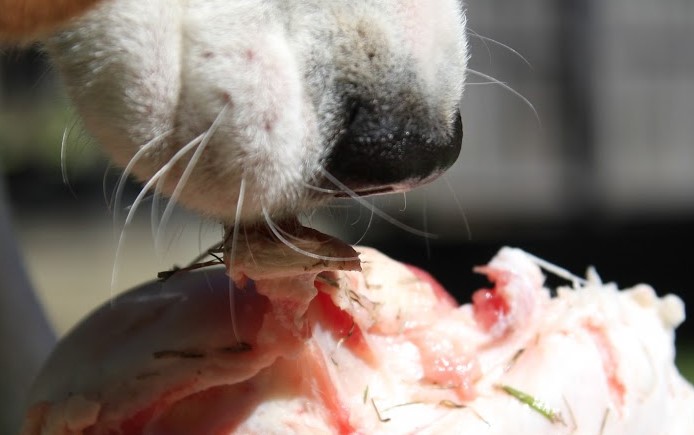
41. Use a remote controlled dog feeder that can sense barking: There are many options on the market to auto feed your dog, specifically when barking. If you identify food as a possibly trigger for barking, then its worth trying one of these devices. They do range in price, and can get expensive so may not be a first strategy to implement Providing food remotely is also a distraction method, it doesn’t hit the root cause, but for some breeds it can provide short-to-medium term relief.
42. Change diet and food: Dogs can be fussy and some brand dog food does not digest well. As gross as it might sound for some regions, you will need to look at your dog’s poop. See if its runny, or strange color or texture. If he isn’t feeling well this could trigger barking. Also, changing diet or feeding different food can make your dog feel upset. Identify a quality food brand, stick with it for a week or two. Monitor her poo and see if there is any impact on barking.
43. Remove any food related scent from areas close to the dog: This is one of my favourite strategies as in my opinion its a hidden gem. Emphasised if your dog is food oriented or you have two dogs where one is protecting food. In my case, the cocker was protecting any food left laying around. The beagle would circle, the cocker would follow and bark.

Rushing to get the kids to school and work, we would forget to clean the dining table, kids leaving a bowl of food out and its all over. While the dogs couldn’t reach the food, they sure could smell it. Before you depart, consider where your food is placed and make sure its not close to your dogs.
44. Freeze food and use a Kong type toy to slowly release the food: Short term fix, but worth a try and a good option if you are only away for a few hours. Make sure you get the right size Kong or toy for your dog. You don’t want any issue once you give the treat to your dog. Freezing food and having your dog lick or chew it for a period is also a great option.
45. Provide plenty of clean water: Over the years I have been into many house, helping friends or similar and I always get surprised when the dogs water bowl is green, full of mould and not changed for an extended period. Don’t let this be your water, keep it clean, fresh, use a quality bowl. Make sure your dog enjoys his fresh water just like you would. If the bowl is beyond repair, buy a new one, get a decent quality bowl that she cant knock over. Without fresh water, you are depriving of a vital resource to keep your dog healthy.

Avoid leaving water bowl in sun. Place in cool area in shade.
46. Try CBD dog treats in an auto feeder: This was a tip from a friend, I have not seen it in action, but I understand the combination of both CBD and an auto feeder worked well in her case. Consider this as an option if aligned to the approach.
47. Change the time you feed your dog meals: Adjust by considerable duration over a period. Slowly increment time. Attempt to break up a hard set routine. With my cocker, when I adjusted her dinner time, this reduced her stress which normally occurs about 2 hours before I can home. Attempting to change times and schedules is a great approach, and worth trying with your dog.
48. Don’t feed your dog random scraps of food: If you notice your dog following you constantly, it’s possible he is waiting for you to drop a treat. More so if you regularly offer such service. Dogs remember food related events very quickly. Furthermore, if you do this on the weekend and during the day, it’s possible your dog is waiting for such a treat and getting uptight. Try and be very strict on your approach to food, ideally to minimise any mixed messages and have a ridged routine that can be followed. Having said that, I do have a strategy where I recommend changing dinner time, so take this into consideration when providing a meal.

Limit the number of treats you provide during the day,
49. Split meals up or change to a single meal: Instead of a big meal at dinner time, try a smaller meal in the morning and at night. Adjust to determine if food is impacting your dog. Likewise, if you feed twice, adjust to a single meal over time to see if this helps. Trying nothing and hoping for the best really doesn’t help. So with some of these ideas, its really about determining what works best for your dog.
50. Change who feeds your dog, introduce variety: Don’t let one person constantly feed your dog. Mix things up, reduce the rigid approach and associated stress this can place on some dogs. Great article here.
Products, Accessories and Toys
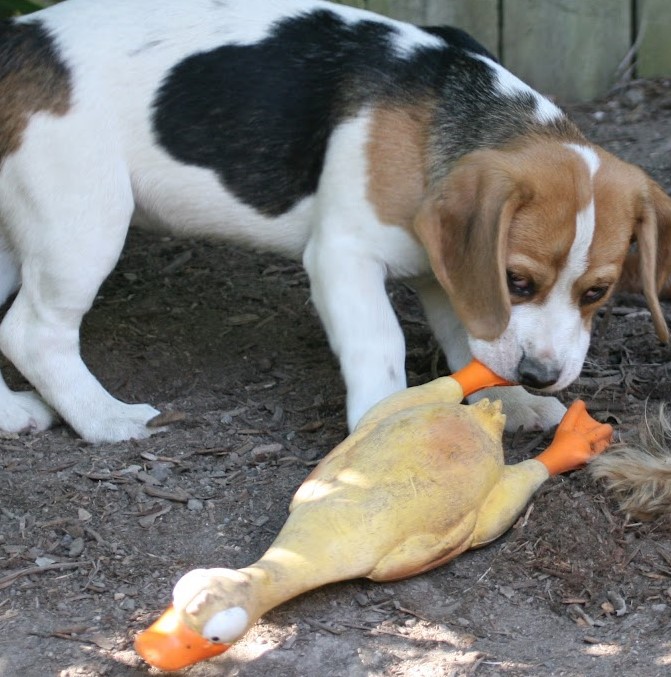
51. Try a pheromone based diffuser or collar: Mixed results on the pheromone, it works for some dogs, some it doesn’t. Location is also important. You need to ensure the pheromone is close to where your dog is most active while you are away. For example, if he sleeps in the back room, but wakes and barks at the front door. You ideally want coverage in both areas.
There are different brands, shapes and sizes, I found the Adaptil Calm Collar to provide the best results for my Cocker Spaniel and Beagle. I also found you need to try for at least 4 weeks before you see any results. So don’t give up right away. The product information indicates you will see a result quickly, but I feel it takes longer.
Also remember to replace the diffuser when it runs out. While not recommended, you can also turn off the diffuser when your dog is away, or its not required. I have written an article about this here.
52. Monitor your dog with a camera that detects activity like google nest: Keep an eye on your dog from work or another location while away is very important. Make sure you have a camera setup. Google nest battery cameras are perfect, no cables, mount anywhere, and can detect dogs. You can receive an alert when your dog moves past the camera. You now have eyes and ears on the ground to get an understanding of what’s going on while away. This will help with other strategies, as you begin to gain insight into what’s transpiring behind the closed door.

53. Provide sufficient toys to entertain. Boredom is often a big cause of barking problems. Based on my experience, providing toys generally only lasts for a short period, maybe 15-30 minutes at best. I would call this approach a band aid, but it can provide benefits so worth trying. Create a mixed toy environment and maximise space, try to avoid throwing a toy on the way out the door and set up something more intriguing that will consume longer time. Placement, different toys, food and non food objects all help to increase the playground effect.

54. Try a Barking collar that emits a scent or sound: Bark collars that emit scent or sound are my only recommended options for negative based strategy. And use with caution as its likely you will not be fixing the root cause of the problem. Only initiating a negative impact to a greater issue. Ideally, use this technique for a short period while examining and introducing other approaches to minimize barking. There are some good collars, but for me getting to the cause of the issue is best.
55. Try using essential oils: There are great options to keep your dog calm, I have seen some owners use essential oils. I have not tried it myself, but heard it does work for some breeds and dogs. Remember not all essential oils are safe and you will need to review the best options for your dog. From my own readings and research, I understand Lavender can work well with some breeds.
56. Provide your dog with rescue remedy drops: I have seen mixed results, but when working through the list why not try them. They have specific drops for dogs, so it’s worth giving them a try.

57. Provide your dog with a security blanket: This could be a blanket you have slept with or had close, he will pick up your smell just like clothing. There are some good blankets on the market if you need some ideas, but I wouldn’t go overboard.
58. Provide a chew toy or bone that will last for an extended period: A chew that lasts for a long time, doesn’t really need an explanation. I will only highlight that this is problem not going to resolve the underlying issue, but for a putty or dog going through stress, it might act as a good short term fix.
59. Use a Robot Vacuum with a camera to see and speak to your pet: Another reader inspired approach. He purchased a robo vac with a built in camera and speaker. He was able to remotely follow his dog and talk to it when the barking began. I really love the idea, probably not going to resolve an underlying issue, but a good quick fix option.
60. Setup an automatic food dispensing toy: I love modern tech, its so cool to see investments in this space. I don’t think an automatic feeder is a long term fix, but you can use to help manage a barking event while working on other strategies to prevent barking.

Dog Treat Tossing Automatic Dispenser.
61. Automated dog toy: Not only are there automated feeders, you can also get dog toys that run on a schedule or automatically. Take a look at your local pet store, or even department store as they all look to be getting into the game.
62. Try an automatic scent diffuser: There is a growing market for scent diffusers for dogs. Its worth a try and I have read good results.
Halfway mark!. You are halfway through the list on how to stop your dog from barking. Hope you are finding value in the strategies.
63. If your dog is compulsive barking, and you are away from home, use a remote control to initiate an event to stop the repetitive behaviour: There are some gadgets that you can use to communicate or take specific action when your dog begins to bark. This could be making a nose, activating a blind or appliance etc. Anything to trigger your dog and change its attention. No real long term fix, but more an immediate problem solver.
Health, Behaviour and Treatment.
64. Ensure your dog is at its correct weight: Often overlooked, but a pooch who is underweight or overweight can cause health related problems. Ensure your dog is within the correct weight class for its size and breed. Best to check with your vet if unsure. If she is underweight, you will find her often seeking for food, this is likely to cause distress and could initiate a nuisance barking event.

Overweight has many other health conditions like diabetes, hypertension, bladder problems and impacted joints. Not making for a fun like and could be causing your dog to feel unwell and subsequent barking when you are away, looking for your comfort. A healthy weight is only going to make your dog happy and reduce the likelihood of barking.
65. Keep your dog clean and skin itch free: A friend had a dog that was impacted by a skin condition. Specifically after using a specific type of dog shampoo. Check your dogs skin, pull the hair apart and see if you can identify any rash or similar. If you dog is itchy during the day, he can roll around and bark, get uptight and then carry on.
66. Provide your dog with calming drops: Often recommended by readers, there are a few suppliers who offer drops you can place in dogs water to help calm. Good option for anxious dogs.
67. Consider a dog massage specialist to help calm your dog: Some dogs like the extra attention and enjoyment of massage therapy. Really sometime to continue on a regular basis, but it could help with your dogs stress levels. Probably a lower priority item, but why not give it a try.
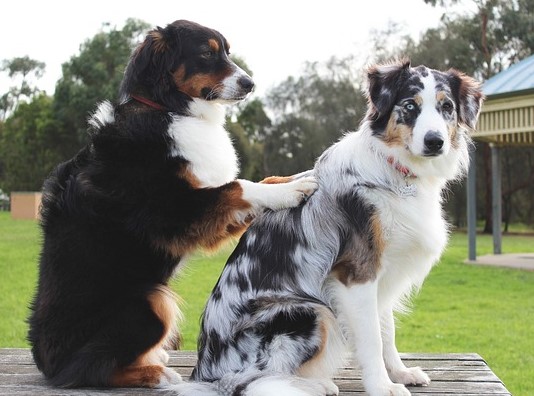
68. Barking can be caused by an underlying illness and its always good to consult your vet to ensure your dog is fit and healthy: Get a vet check up, make sure there is no underlying problem that is causing your dog to stress. Request a blood test this can quickly highlight any concerns.
69. Dental check-up, clean teeth equals a happy dog. I experienced a problem with my cocker where she needed a tooth removed. It was causing discomfort and initiating barking behaviour. Make sure your vet checks your dog out during the next annual visit including teeth.
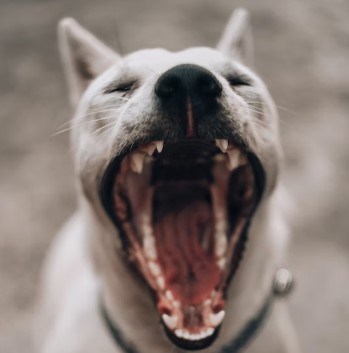
Clean Dog Teeth equals a healthy mouth
70. Blood test – make sure there is no underlying condition that might trigger your dog. Possibly imbalance: I have somewhat highlighted this previously in other strategies, but to call it out explicitly, get a blood test. Make sure your dog is fit and healthy.
71. If you have two dogs, consider separating for a short period to see if there is any territorial behaviour: Interestingly, when my beagle passed away, my cocker became a different dog. She was less on edge, more relaxed and barking less. Based on my experience and knowledge, and seeing how they interact, I felt she was the leader of the pack, always watching and keeping an eye on the beagle.

If the beagle was out of order, or the cocker wasn’t happy with something, she would announce with a bark. Unless the beagle stopped the activity, she would carry on.
If you have capacity, try splitting the dogs for a period, see if this helps. I have other ideas on how to minimise stress between two dogs if this is not possible.
72. Place a large cut-out picture of you in the house: A bit of a wild approach, but I have seen people try it. Not sure how effective, but you can also attempt it. There are many online options available to obtain a cutout, pricing ranges depending on quality. But take a stab if this is your cup-a-tee. Add some clothing for your scent and see the results.
73. Change the dominant person who interacts with the dog: Make sure many family members interact with your dog, or try having a single key person. I don’t know the exact answer, but both sides of the approach have their own benefits and challenges.
74. Read about your breed understand triggers, anxiety provoking: Each dog is very different. You need to determine what works best for your breed. Make sure you pick up a good paperback book and read about it. I was surprised when I got my beagle, she had a long list of existing things to be aware of.

Entertainment and Sounds.
75. Turn on a radio or a continuous audio feed such as an audio book with talking: Often a top item, and highly recommended, let some music play, TV, news channel audio book, dog specific music or anything in between. Adjust volume, location, turn on more music players, try to mix it up. Review the results over a few days or week and keep adjusting as needed.
76. Play white noise at different volume levels: A constant background noise will quickly muffle any external sounds that could trigger your dog. Turn it up a little, try different sounds, review the results. If you have an iPad or similar that is available, there are many free apps you can download to generate white noise.
77. Minimise external noise or sounds that could set your dog off such as mower: When I moved into a ground floor apartment, the external area contained grass the required mowing. With the blinds up and no white noise or background noise, when mowing time came it was an instant trigger to commencing a backing event.
By blocking access to the are and combining other techniques, I was able to prevent any further challenges with mower noise. Check the sounds coming from your location, remember dogs have amazing hearing and can pick sounds up very easily. Move your dog, or introduce other techniques to reduce the impact of bark provoking sounds.
78. Turn on TV for visual and audible background distraction: The TV image colours and audio can provide comfort to your dog that someone is home. Leave it running and he might not even know you have gone. Can be a good option to try with the blinds closed, the extra depth from a dark room can help distract your dog. I found that leaving the TV on all day worked well for my dog too.
79. Record your voice and have it play back throughout the day: If your dog is missing you, let him hear your voice. Record it, save it and play it. Record a long conversation and have it on repeat. Sing a song, do anything to help indicate you are still home.
80. Change the doorbell chime so your dog doesn’t know the ring sounds: If your dog barks at the sound of your doorbell, change it. Try a google nest doorbell or similar where you can easily change the bell sound. This way, your dog wont recognize and get uptight if a postman or similar comes ringing.

81. Normalise any sound that may instigate barking: If there is a sound that could trigger your dog. Try to normalise it. This could be slowly introducing the sound over a period of time. There are other options, but first identify if there is a specific sounds your dog is hearing that kick starts the barking.
82. A bark tells a 1000 words, listen and learn: This is another favourite and really underrated. Make sure you have a camera setup so you can capture your dog barking. Listen, and gain insight into the bark. Compare to different types of barking. Determine the cadence, pitch, tone, any parameter that can help translate into the type of bark.
Record when your dog its barking for food, happy or play etc. Then listen to when he is barking while you are away. While you might not see a direct correlation, just take, give it a few weeks and you will start to get a feel as to what the bark might mean. You might hear stress or tension in the bark, as it sounds strange, try and see for yourself.
Great table on Pet Helpful.
83. For a small apartment, set up multiple scheduled activities for the period you are away. Using dog tech to assist while you are away is a great option. There are many more products coming into the market. You can set a schedule or remotely activate, there are many options. Set up an array of different items to make an adventure playground for your dog. Each has a cost, so determine what works for your budget and align accordingly.

Love, Stimulation, Attention and Routine.
84. Introduce another dog into the family, or mind a family member or friend’s dog for a short period: My beagle loved to snuggle, being a pack dog, she enjoyed having her sister dog. More so than her sister (cocker spaniel) I would say. With good company, dogs can calm and chill down, reducing stress when you are away. Introducing another dog permanently is a big decision and not something to take lightly, but if it does help your dog, then its worth considering.
Research your breed, understand if its a pack dog, this will give you some insight. Try to bring a friend for your dog, maybe a family or neighbour will allow your dogs to have play dates. Set up a camera and watch, see the impact. It might take a week or longer, over many visits, but try for a period and determine if you should consider another dog into your family.
85. Spend more time with your dog, increase over normal levels: Extra attention for a short period can help to determine if he is missing you. This is more of an assessment strategy than an immediate cure. Leave a little later, stay longer and play for more time to see if this helps keep a smile on your dogs dial.
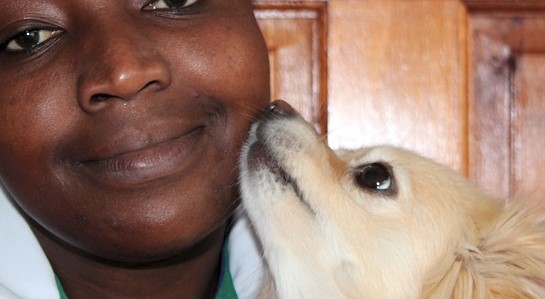
86. Maintain good social connection with other dogs, walks to dog parks etc: Very important for your dog’s social life. Make sure he or she meets lots of dogs during its puppy years. A dog a day as a minimum. This is a good mental state for your dog and helps if there are other dogs close by such as a neighbours fence. It reduces the likelihood of your dog getting uptight. Get your dog to meet the neighbours dogs too, regular visits help at all levels. Take your dog to the dog park, let him meet dogs all the time so it becomes a normal event.
87. Don’t react or respond when you come home: Another top pick. If you get excited to see your dog, he will be hyper anxious waiting for you. I know it’s a lot of fun to have your dog greet you with a big happy face, but try and ignore your dog when you first come home. We need to disassociate the two events. You coming home should be normalised like you have not been gone for long.
Walk in the door, past the dog, greet family members briefly and get on with your duties. When your dog has settled, maybe 15 minutes later, go say G’day.
88. Don’t respond to barking: Responding by giving your dog attention could increase the frequency and intensity of barking. If he barks, ignore it, well at least try your best. This can be tricky as you want to stop your dog from barking. You need to find a balance, but ideally try to not react to the barking as this could create more problems.
89. Consider a doggy day care for some period where barking is worse: This is always a good mid week buffer. It gives you some comfort, allows you to take it easy and not worry about your dog. It allows dog to dog time for your mate and helps to manage energy levels. It may not be a permanent requirement, but at least give doggy day care a try if you have one close to your residence.

90. Adjust your routine, including time you leave for work. Mix things up, break down the routine which in your dog’s mind might include barking. Go to work later, earlier, come home at different times. Work from home and hide away. Each time you see your dog, don’t react, carry on like you have not gone anywhere. Desensitise the concept of you leaving for extended periods.
91. Minimise dog excitement when playing activities: If you play tug or other games that really stir up your dog, try and reduce the intensity for a while. Play calmer games, go for longer walks, but minimise any high intensity games. This really is to help reset your dog, reduce the approach to get hyper engaged into a specific single situation.
92. Give your dog an unwashed item of clothing, in its bed or close by- worn clothes: Let your dog smell you while away. This is an old trick, but still widely used. Don’t wash the garment, just place it near where your dog sleeps and monitor the results.

My Beagle in a washing basket
93. Desensitise any specific item, surrounding that might trigger barking: Take a look at your house, the surrounding areas where your dog is. Identify anything that might initiate a barking event. People, noise, lighting, colours, reflections. Dogs see and hear different from us, so really look outside the square.
94. Remove stresses or other anxiety provoking threat’s: All dog breeds are different, some can be hypersensitive to external factors that can trigger a barking event. Watch and listen, learn what might be causing your dog to bark, and hopefully this list will help generate many ideas.
I have seen that introducing another animal or pet into an environment causes some dogs to get very upset. It disturbs the hierarchy between all human and furry friends. Identifying stresses won’t be easy, and you will need to be sensitive to your dog and learn to read the bark. Get down low, to your dog’s height, spend time, see where she is looking at. Use a camera while not away, and start to connect. It might sound like a strange strategy, but it’s one to slowly build on. It’s more of an awareness, you will begin to see specific characteristics that might trigger a barking event.
95. Use different entries when coming home where possible: Mix things up, don’t enter the same way every time you come home. Your dog will sit and watch this entry point, come in different ways, and when you do, just carry on. No big fuss, no patting, cuddles etc. Get on with your duties. A little later, then go and say a big hello.

96. Consider introducing a second dog into the family: This can have unexpected consequences, and for some breeds could introduce new challenges. Its something that you will need to consider and ideally if you can try another dog for a period of time first you will be able to get a feel for the outcome. For me, two dogs probably increased the stress due to breed related conflict. So do some research first and make sure you pick breeds that live well together.
97. Visit your dog at lunch: While it might not work for everyone, sometimes a day visit can break up the tension and reduce the likelihood of a barking episode. If you dont live far away, drop home and walk through the house, let the dog feel like you never left. Sneak out the back door and carry on with your day.

98. Neighbour check in: Simple and easy if you have a helpful neighbour. Ask them to pop in while you are away to check your dog.
99. Day visit a dog friend: No real long term fix, but tiring out your dog with a day visit to see a dog friend can always help. If there is somewhere on your way to work, spend the 5 minutes dropping your dog on your route. This will not only prevent barking at your house, but tire your dog. You could rotate every second day as needed.
100. Limit time alone to 4 hours – Even as a starting point where possible: Reduce the duration you are away from your dog. This is important for puppies as they have a lower attention span. Come home after 4 hours max and slowly extend.

101. Manage your departure appropriately: Some dogs may start to show signs of anxiety when their owner indicates that they are about to leave the house, such as locking the back door or reaching for their coat or keys. If this is the case, you can carry out these actions on a regular basis without actually leaving the house. This will help to dissociate these pre-departure cues from your actual departure and avoid escalation of any anxious behaviours.
Scent and Sound
102. Remove external scent with bleach such as cats or other animals: If there is an animal wandering around your house, your dog could get uptight when he can smell the scent. Dogs have a very good sense of smell, and your ability to remote the scent entirely is limited. You can try bleach or similar and spray around the area. This could help dilute the scent and minimise any tension with your dog.
While I have not seen this work first hand, I have read people using this approach previously so worth considering especially if there is an animal causing your dog to get upset
103. Remove access to any external rubbish bin: The smell of a good rubbish bin will set any dog off. More so if you have two, you might find one dog protects it while the other hovers around. There are many scenarios here, inside/outside etc. The best result, move any bins away from your dog or dogs to minimise the risk.

104. Remove vermin from around your house: Any rogue animal running around your house could set your dog off. Get a pest management person to conduct an audit and set appropriate traps if needed.
Conclusion
Wow, what a list.
Remember the outcome will vary between different breeds, as with all these strategies, some work and some don’t but the long list should give you the best chance at stopping or at least minimising barking behaviour. I expect you are now well educated on how to stop your dog from barking.


